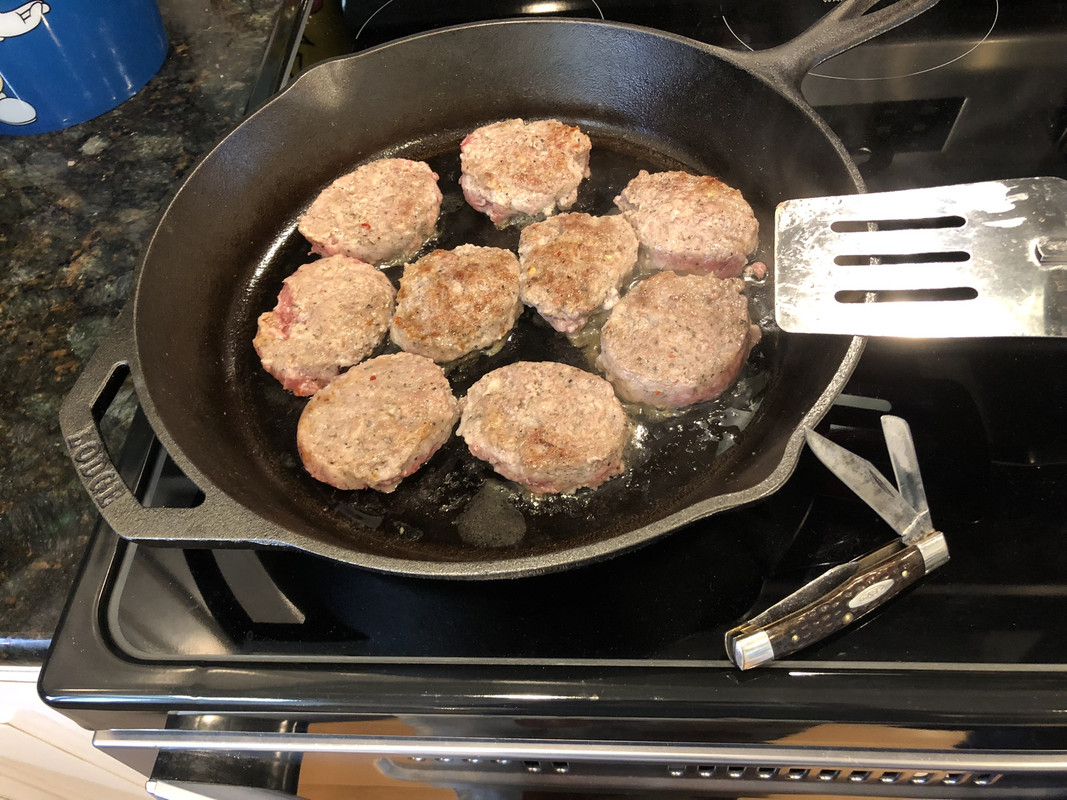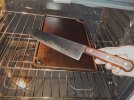- Joined
- Mar 11, 2013
- Messages
- 2,264
Nothing cooks cornbread like cast iron.
The BladeForums.com 2024 Traditional Knife is available! Price is $250 ea (shipped within CONUS).
Order here: https://www.bladeforums.com/help/2024-traditional/

Great meal. One of my favorites.Nothing cooks cornbread like cast iron.

I'm going to have to drag my griddle out too, that and both Dutch ovens are in need of seasoning now that winter is upon us.Recently I discovered the lodge griddle that I bought maybe a couple years ago, tried a few times, then shoved in a cupboard and forgot about.
Needless to say it had some rust on it, so today I decided to strip it all down with a wire cup and finishing sander then start the seasoning process over again.
I was recently thinking about getting a 4 slice toaster , but then I remembered that I have a griddle I can just use so why bother.
Here it is in the oven cooling down , along with one of my main users in the kitchen a Dexter 45A10H.
View attachment 2003581
That's the 2nd coat of oil for now, but it will get a couple more at least.
The baking polymerizes* the oils, creating your non stick surface.When seasoning why do you have to cook it?
Why can’t I wipe on oil, pop it in the one. For an hour, then add more oil and do another coat Right away?
It'll do till we get one.The baking polymerizes* the oils, creating your non stick surface.
*I think that's the term I'm looking for.
That's exactly the correct term.The baking polymerizes* the oils, creating your non stick surface.
*I think that's the term I'm looking for.
Thank youThat's exactly the correct term.
When oils or fats are heated in cast iron at a high enough temperature, they change from a wet liquid into a slick, hardened surface through a process called polymerization. This reaction creates a layer of seasoning that is molecularly bonded to the iron. Without this layer of carbonized oil, iron cookware would corrode and rust due to the oxygen and moisture in the air.
I apologise, I missed that part of your question. If you're so inclined as to do another coat then adding it while still hot should be fine, I've usually found extra coats to be a bit superfluous if the pan isn't too far gone though.I appreciate the info.
So my question is, do I need to let the pan cool between coats or can I just take it out every hour and add another thin layer of oil? What function does cooling serve?
The way I learned was to preheat my iron before putting a coat of oil on, so I assumed the heat was necessary and do not bother cooling my iron down between coats of oil.I appreciate the info.
So my question is, do I need to let the pan cool between coats or can I just take it out every hour and add another thin layer of oil? What function does cooling serve?
Yes it does, it's more durable and things stick less.I’ve got some pans that need a complete rework I think. We got some that stick every time and rust after washed.
Doesn’t the more coats added make it that much better?
